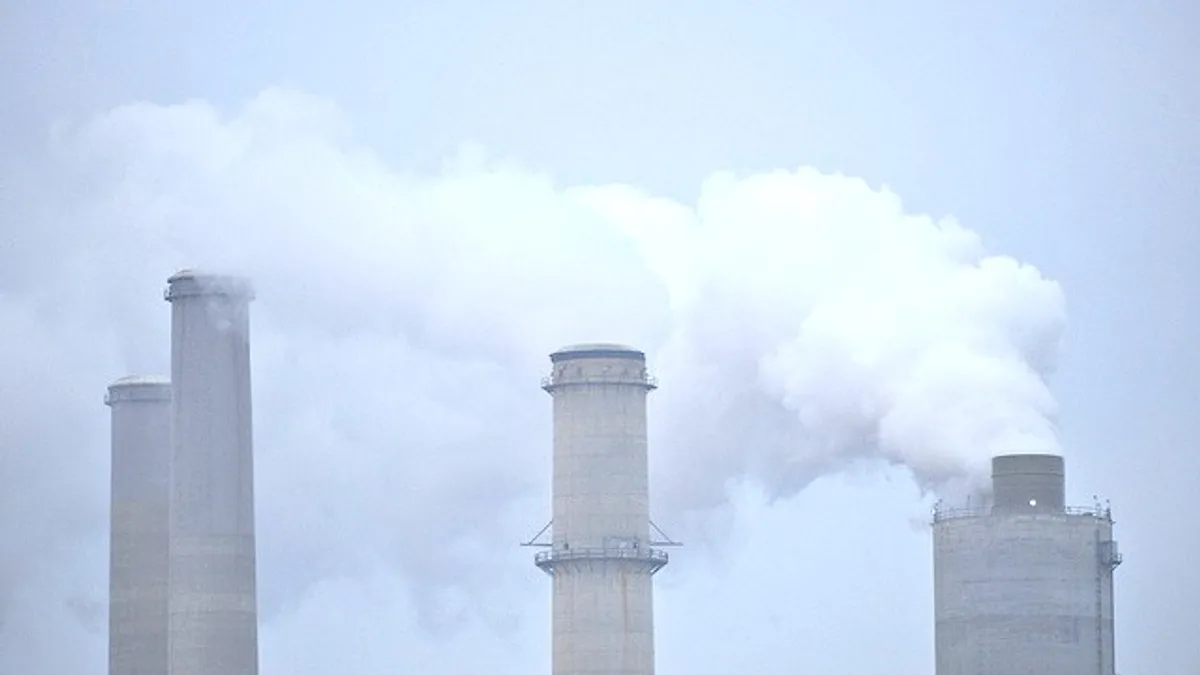Dive Brief:
- The Environmental Protection Agency on Tuesday released final designations for its ground-level ozone regulations, listing 51 counties and tribal areas in 22 states as not compliant with the 70 parts-per-billion standard set in 2015.
- The final rule includes multiple changes to recommended county designations EPA released in Dec. 2017, including a Wisconsin county that is home to a factory touted by President Trump. Environmentalists said the changes appear to be evidence of political appointees altering the compliance judgments of career EPA staff.
- In March, a federal court directed EPA to release the final designations for ozone by the end of April in response to court challenges filed by public health groups and liberal-leaning states. Six counties in Texas will be designated by mid-July.
Dive Insight:
Final ozone designations for the vast majority of U.S. counties are unlikely to end the legal battle over the EPA rule. Environmentalists on Tuesday hinted new lawsuits are likely over the agency's handling of compliance designations for some key counties.
At issue are EPA's recommended compliance designations released in late December. More than a dozen midwestern counties were then slated for nonattainment, but had their designations changed to attainment or partial attainment in the final rule, Buzzfeed's Zahra Hirji noted on Twitter.
Included in those changes is Racine County, Wisconsin, home to a planned $10 billion Foxconn manufacturing plant touted by Trump as a direct result of his election. A nonattainment designation could have forced the plant to install new pollution control equipment, but EPA listed the county as in attainment, despite pollution monitoring data from the past three years (2015-2017) showing average ozone levels of 74 ppb, beyond the 70 ppb limit.
In a separate document, EPA explained that it did not have sufficient data to evaluate Racine County for the 2014-2016 period on which it bases attainment decisions. Due to "a dilapidated building presenting unsafe working conditions," EPA allowed Wisconsin officials to close down an old pollution monitoring facility in 2013, causing it to miss the 2014 ozone season.
That rationale is "farcical," said John Walke, clean air director at the Natural Resources Defense Council.
"What EPA appears to have done is say since we only have two years of data from the years we want to use, and we don’t have a third year of data because of the monitor being moved, we are simply going to declare the area to be in attainment," he said. "It's just not rational or defensible for the agency to ignore data, including the most recent data from 2017, to declare in 2018 that Racine County has safe ozone levels."
"EPA professional staff recommendations from December followed the facts and the evidence of monitored violations and contributions to adjacent nonattainment areas," he said. "I view it as political interference and sabotage of the lawfully required outcome, which is to recognize that Racine County has unhealthy smog levels."
States with nonattainment areas must devise cleanup plans to submit to EPA for approval. The agency last month released a compliance framework for states, including a scale of non-attainment that sets implementation deadlines for areas based on the severity of pollution. The designations go into effect 60 days after their publication in the Federal Register.













